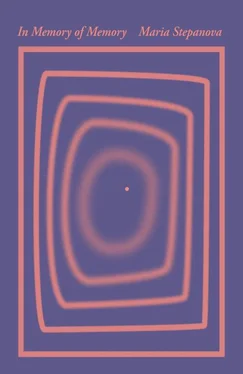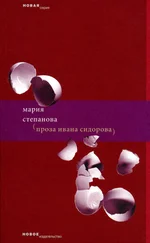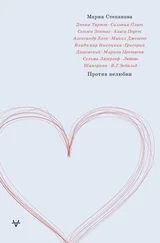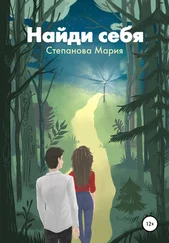Over the years the little figure didn’t stop giving lessons (Tsvetaeva counts these lessons in numbers, in scale and materials, in numbers and hierarchy, and in thinking). It’s hardly surprising that the subject of her studies changed. I thought about it as I carried the little china boy in my pocket along this or that strasse , stroking his invisible back with my finger and imagining how he would look on the cover of a book about memory. His lack of arms made him look taller than he was, he looked straight ahead like a curly-haired figurehead, he wore old-fashioned knee-high socks, and he gleamed white. One rainy evening he fell out of my pocket and smashed on the tiled floor of the old house.
The boy broke into three pieces: his stockinged feet slipped under the bath’s deep belly, his body lay severed from his head. What had struggled to symbolize wholeness in my own and my family’s history had, in one fell swoop, become an allegory: the impossibility of telling these histories, the impossibility of saving anything at all, and my inability to gather myself up from the splinters of someone else’s past, or even to take it on as my own convincingly. I picked up what I could from the ground and placed the pieces on the desk like jigsaw pieces. It was beyond repair.
On my last day in Vienna I went back to two different places, both terribly alike, both models of preservation, storage devices designed for the remnants of human existence, for what will be left when we are no longer.
In the Michaelerkirche’s crypt, human bones were arranged and inventoried in a beautifully clear system. The bones had collected over hundreds of years under the church, and someone had organized them by type and size, tibia to fibula, laid in neat heaps like firewood. Smooth skulls were heaped elsewhere. The guide had the terrifying cheerfulness of a scout leader, she pushed us this way, then that, she made jokes about the transience of earthy existence, she pointed out the fantastically preserved little shoes and the silk corset of a pregnant woman with a dark tuber of a face, exhibited for all to see in a special coffin. Wie hübsch! she exclaimed enthusiastically, really very sweet! And it was true, that there was a kind of hierarchical coziness in her underground realm: whatever hadn’t quite lost its tangibility, and remained more or less undissipated, was laid out for public view. The rest had been dismantled into spare parts and pushed out of sight, to the periphery of oblivion.
My next stop was the Josephinum, a museum of human anatomy, or at least how they conceived of anatomy in the nineteenth century: the body a temple, eager to display its inner sanctum to the enlightened visitor. The Josephinum is a museum of medical science and my visit was by way of a bow to the complicated art of medical science, and also to my great-grandmother Sarra and her Bulgarian lover, who received his medical diploma in Vienna. What was once the gleaming pinnacle of medical knowledge, the last word in technical achievement and the object of professorial pride, looks much like a cabinet of curiosities now, a monument to ancient arts practiced by starched nurses and doctors with mustaches. Pipes and tiny hammers lay idle alongside surgical instruments, clamps and scissors and iron-beaked microscopes — all of it useless. Without their owners the objects took on the air of curios and lay under the glass like the rattles and swaddling of a profession that has long since grown up. The only things that hadn’t grown old were the bodies, so to speak.
The bodies in the Josephinum had not aged like their corruptible counterparts. They were made of pure beeswax to celebrate the Enlightenment, the rational mind, and the benefit of teaching aids — a whole regiment of them, more than a thousand anatomical models, commissioned by Emperor Joseph II and manufactured in Florence under the watchful eye of Paolo Mascagni, philosopher and free thinker and the author of the Treatise of Anatomy . The models were then transported across the Alps on mules, just as France, aroused from Grenoble to Toulouse, tossed and turned on its bed of revolution. Then they were floated down the Danube to be exhibited in the interests of science, and here they all are, alive and proud as athletes on the podium in their boxes of tulipwood and glass.
Rational man is served up like a dish in this museum, his belly sliced open and his waxy organs laid out like a plat du jour: a varnished liver; testicles swinging comically on their little ropes. Some of the waxworks are resting on their elbows, some sprawled out, naked to their skeletons, or, wearing their red flesh in bundles tied with veins, they show off their ribbed muscle fiber, fatty tissue, the nifty combs of bone in foot and hand. Marquesses have their curly heads tipped back so the wriggling pipework of the neck is visible. All of it is haunted by the indifference of immortality: the crotch’s cradle, the pearl on an untouched neck, the body’s workings laid bare like a music box.
The Josephinum felt like another response to the question I had been turning over in my mind. These beautiful inanimate bodies had lost their reason for being (teaching aids, witnesses, explications) and were empty shells, like the carriages and coffee pots in other museums. Objects falling out of currency slowly lose their defining qualities and turn a new nonhuman face toward us. They return to the materials from whence they came, wax, paint, and clay. The past rewilds itself, oblivion springs up out of it like a forest.
*
Eight years ago a friend was putting together a book of interviews with writers. In these interviews the writers were encouraged to talk about themselves, their childhood, early years, the friendships and conflicts that defined them, their early and not-so-early work. It was a marvelous book. My interview wasn’t included. We made two attempts, with two years in between the attempts, but nothing worked. There was something extraordinary about the recorded interviews, but they were of no use for the book. Both of the recordings were like two peas in the pod: they made the same key points, the conversations climbed a route scattered with the same anecdotes — and they revealed nothing at all about me. It was almost funny how absent I was. Over the many pages of typescript I scrutinized my family legacy, jumped through the branches of the family tree, and made a virtuoso performance of avoiding any mention of myself. I answered direct questions, of course, but my answers were so drab and reluctant: born here, studied there, read and wrote this and that… But what delight I took in somersaulting in midair and diving deep into the free waters of the lives of my unknown ancestors! As a result of this reticence about my own practice, nothing of the interviews could be used. I kept the recordings like the X-rays of a fracture, just in case, and a few years later they actually did come in handy.
I was reading Marianne Hirsch’s classic work, The Generation of Postmemory , as if it were a travel guide to my own head. I knew everything she described immediately and intimately: the ceaseless fascination with one’s family’s past (and, beyond this, with the densely populated human context for these lives, the thick undercoat of sounds and smells, the coincidences and concurrences, the synchronized turning of the wheels of history) and the clinical boredom with which I roll my own contemporary world backward to that past, back to them, and feel quite certain, in-my-gut certain, of how it was back then, the streetcar routes, the stockings that sagged around the knees, the music from the loudspeaker. Any story about myself became a story about my ancestors. There they were behind me like an opera chorus encouraging my aria — only the music was written seventy years ago. The structures that emerged from the black waters of history fought shy of linearity, their natural state was copresence, the simultaneous sounding of voices from the past, contradicting the obvious: time and slow disintegration.
Читать дальше











